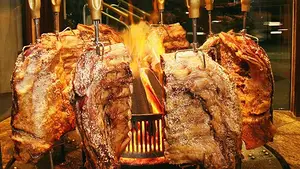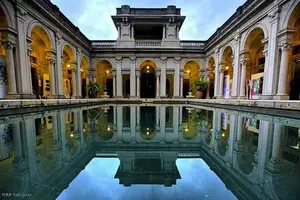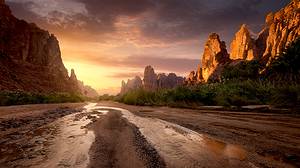3-day animal safari tour in Cape Town
1 cities |
7 attraction(s) |
total distance 149
km
 TIPS
TIPS
Day1
Day2
Day3
Day1: Cape Town
4 attraction(s) ·
83 km
1
Table Mountain is a landmark in Cape Town, with a flat top resembling a table. It stands at an altitude of 1086 meters. Lion's Head and Signal Hill are on the right, and Devil's Peak is on the left. During the summer season (October to March), a large amount of moisture rises to the top of the mountain and forms clouds under the influence of cold air, creating a fairytale-like atmosphere. Local people often say that God has laid out a "tablecloth" for dining. Since 1929, a 1220-meter cableway has been in operation, allowing tourists to reach the mountaintop. Now, visitors can enjoy a 360-degree panoramic view from the cable car.
20
km
2
Seal Island is a small island located in Hout Bay, famous for its abundance of seals and seagulls. Taking a boat ride to this island to observe thousands of seals, seagulls, and other seabirds in their natural habitat is a rare experience. If you're lucky, you may also spot rare great white sharks and witness them hunting seals. Tourists and photography enthusiasts often embark on the boat from Mariner's Wharf at Hout Bay Harbor.
47
km
3
The world-famous Cape of Good Hope is located at the southwestern tip of the African continent, about 2 kilometers away from Cape Point. It is the meeting point of the Atlantic Ocean and the Indian Ocean, and it is part of the Table Mountain National Park. Cape of Good Hope is a landmark of Cape Town and even the city was named after it. It has significant historical and trade importance as a major sea route for European countries to reach Asia. The waters around Cape of Good Hope are known for storms and huge waves, but it remains a popular tourist destination in the Table Mountain National Park.
18
km
4
Boulders Penguin Colony in Cape Town is the best place to observe penguins. There are approximately 3,000 penguins here, and the breeding season is from February to August. From November to December, penguins molt their feathers, so you can see different growth stages at different times. Additionally, the rocky beach is also a habitat for other birds, whales, seals, sharks, and dolphins.
Day2: Cape Town
2 attraction(s) ·
67 km
1
Oudtshoorn is famous for its ostrich farming industry. Ostriches are not only the largest birds in the world, but also highly valuable poultry in terms of economic value. Their skin, feathers, meat, and eggs are developed into expensive products. As early as the 19th century, Oudtshoorn's ostrich farms began breeding ostriches and exporting ostrich feathers to Europe for use as decorations on hats and clothing for the upper class. The farm owners became wealthy as a result, and their luxurious residences were called "Feather Palaces". Nowadays, the Oudtshoorn ostrich farm is one of the most popular tourist attractions in South Africa. Visitors can not only witness the spectacular sight of thousands of ostriches gathering here, but also learn various related knowledge about ostriches in exhibition rooms, enjoy ostrich feasts, and purchase exquisite ostrich crafts.
67
km
2
Cango Caves is a large natural limestone cave located 30 kilometers north of Oudtshoorn. It is famous among tourists and features ancient Bushman paintings near the cave entrance. Inside the cave, there are vast caverns with impressive stalagmites and stalactites, some of which are over 10 meters tall and date back over 150,000 years. The cave's acoustics are known to be exceptional, with symphony orchestras having performed there in the past. As you explore further, you'll come across massive limestone columns and stalactites illuminated by colorful lights, creating a surreal atmosphere reminiscent of a music hall or theater.
Day3: Cape Town
1 attraction(s) ·
0 km
1
Tsitsikamma National Park is located within the Garden Route and is known for protecting the local forest, coastline, and otter trail. It is part of the Garden Route National Park.


















